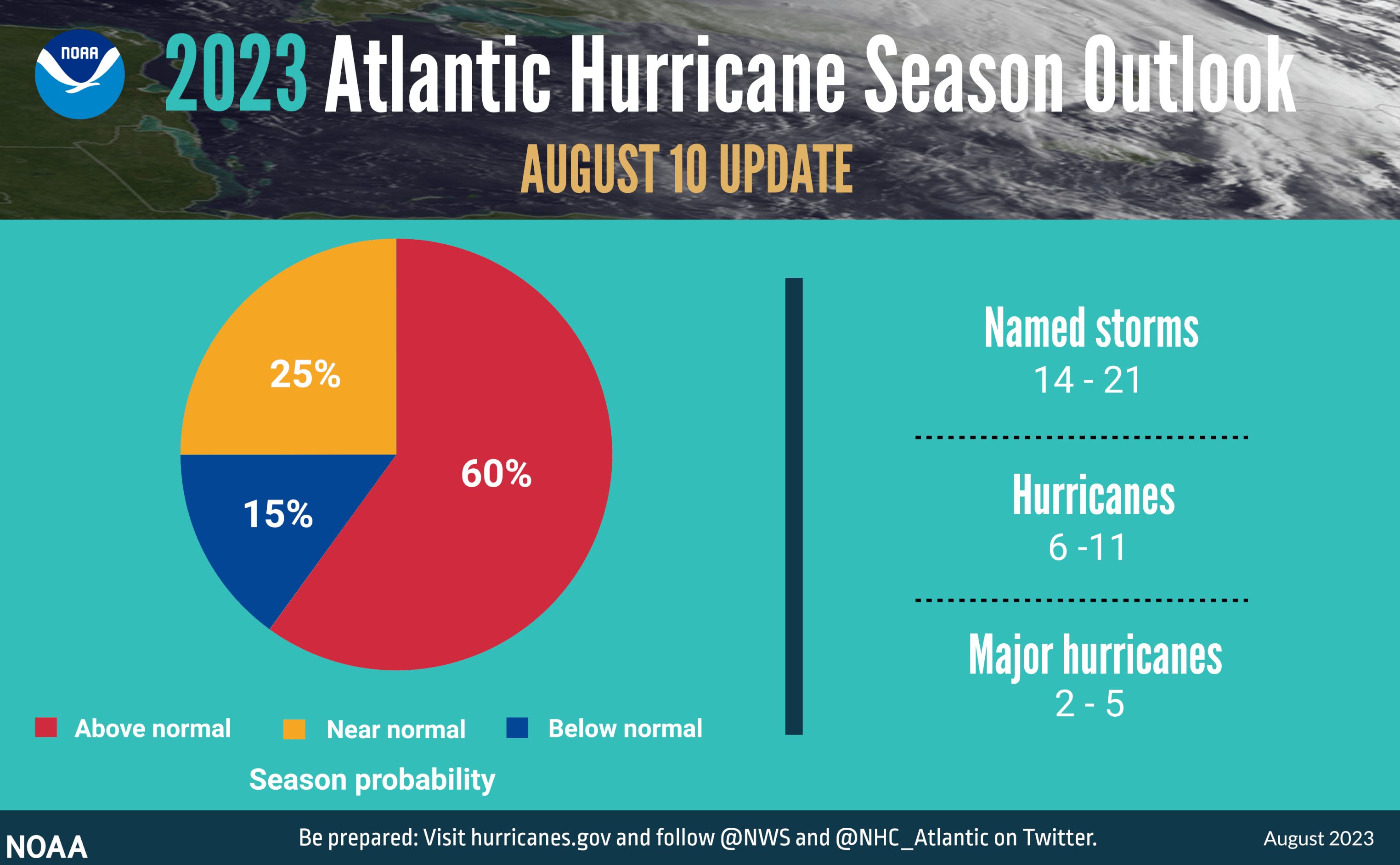WASHINGTON – The National Oceanic and Atmospheric Administration (NOAA) has revised its forecast for the 2023 hurricane season. NOAA is now calling for an “above-normal” storm season, with more Atlantic basin activity.
The revised forecast, issued Aug. 10, predicts 14 to 21 named storms (winds of 39 mph or more), of which six to 11 will be hurricanes (winds of 74 mph or more) with two to five of those being major hurricanes (wind speed of 111 mph or more).
Early in the season thus far, five storms have achieved tropical storm strength, with one becoming a hurricane. One storm was left unnamed. The other four have used the 2023 names of Arlene, Bret, Cindy and Don. The next named storm will be Emily.

NOAA’s Climate Prediction Center, a division of the National Weather Service, had previously predicted a “near-normal” hurricane season, which means 14 named storms. The upgrade to a forecast of 14 to 21 named storms comes because the usual offsetting impact of an El Niño on Atlantic basin storm formation has been slow to develop and may not be strong enough in time to influence the remainder of the season, which ends Nov. 30.
Where the earlier forecast saw a 30% chance of a near-normal storm season, that percentage has doubled to 60%. The major culprit, among other factors, is the record-warm Atlantic sea surface temperatures.
NOAA also announced that the Climate Prediction Center has put into operation a new, enhanced model, with the goal of better predicting rapid intensification of storms. The new model will run alongside the existing models for the remainder of 2023 before taking its place as the primary forecasting model.
Contact the author, Vince Conti, at vconti@cmcherald.com.








